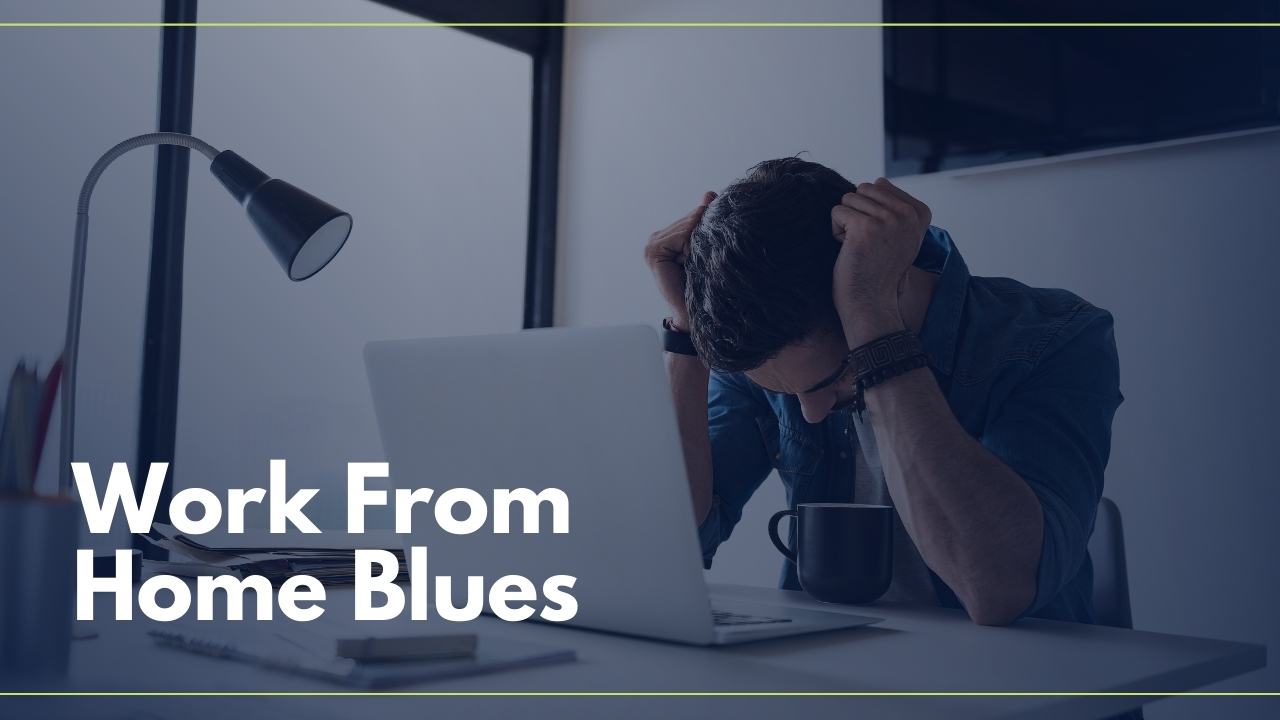- The COVID-19 pandemic is raising fresh questions around the safety of indoor environments, specifically indoor air quality.
- While coronavirus is top of mind, it isn’t the only health concern linked with the air quality of indoor spaces.
- While plants have been touted as helping to improve indoor air quality, in a recent article for HBR Dr. Nicholas BuSaba argues that plants can collect and foster the growth of mould.
We humans are an indoor species.
Case in point, did you know that Americans spend approximately 90 percent of their time indoors?
It’s a startling amount. And over the past 12+ months, owing to coronavirus lockdowns and stay-at-home orders, that level has likely increased.
Now, with restrictions easing in parts of the world and people once again leaving their homes to use offices, shops, restaurants, cinemas, and gyms, it’s raising fresh questions around the safety of indoor environments.
Specifically, indoor air quality.
And since what we breathe indoors is on average two to five times more toxic than what is typically outside — because of poor ventilation and off-gassing of toxic chemicals – these are questions that need answering.
Here’s how the EPA defines indoor air quality (which has its own abbreviation: IAQ) and why it’s an important topic on the health and wellness agenda:
Indoor Air Quality (IAQ) refers to the air quality within and around buildings and structures, especially as it relates to the health and comfort of building occupants. Understanding and controlling common pollutants indoors can help reduce your risk of indoor health concerns.
Those “indoor health concerns” have intensified since the onslaught of Covid-19, since transmission of respiratory droplets is made easier by poorly ventilated spaces.
In fact, a new study by the University of Cambridge and Imperial College London found that in poorly ventilated spaces, the virus behind Covid-19 can spread further than two metres in seconds. The study also claimed that the virus is far more likely to spread through prolonged talking than through coughing.
But while coronavirus is currently top of mind, it isn’t the only health concern linked with the air quality of indoor spaces.
The EPA lists various health effects associated with indoor air pollutants, including irritation of the eyes, nose, and throat; headaches, dizziness, and fatigue; respiratory diseases, and even heart disease and cancer.
Stagnant Air Reduces Cognitive Function
A study started in 2015 by Joseph Allen, a public health researcher at Harvard, examined the impacts of ventilation on office workers.
During the study, office workers were subjected to different levels of building ventilation and then asked to perform a cognitive test. The researchers found that doubling the ventilation capacity also doubled cognitive function test scores.
The research suggests that spending time in areas of high humidity and rising carbon dioxide concentrations cause people to feel sluggish and tired, which is why indoor air quality is so important in the workplace.
So how can we improve indoor air quality in order to improve our cognitive performance, and our overall health and wellbeing?
Key to improving air quality is enabling better ventilation. Recommendations from the CDC on increasing ventilation include the following:
- Open windows and doors to increase outdoor air flow, and use fans to increase the effectiveness of open windows.
- Rebalance or adjust HVAC systems to increase total airflow to occupied spaces when possible. Run the HVAC system at maximum outside airflow for 2 hours before and after the building is occupied.
- Turn off any demand-controlled ventilation (DCV) controls that reduce air supply based on occupancy or temperature during occupied hours, and switch from ‘auto’ to ‘on’ in order to operate the fan continuously.
- Improve central air filtration by making sure air filters are properly sized and within their recommended service life. Inspect the filter housing and racks to ensure appropriate filter fit and minimize air that flows around, instead of through, the filter.
- Check exhaust fans and exhaust ventilation systems in all areas, including restrooms and kitchens, to ensure they are working at full capacity when the building is occupied.
- Use portable high-efficiency particulate air (HEPA) fan/filtration systems to enhance air cleaning.
Of course, the quality of indoor air isn’t solely about ventilation. It’s also necessary to clean regularly to avoid a build-up of dust, dirt, and pet dander – which is particularly important if you have a pet-friendly workplace.
Any extra cleaning routines you’ve introduced to your workspace during the pandemic will have a double impact on your indoor air quality. First, it will help minimise transmission by keeping high-touch surfaces clean and sanitised. And second, it will help prevent dust, dirt and dander from circulating throughout your space, which will reduce the impact of allergies and other respiratory issues.
During cleaning, pay particular attention to soft surfaces such as carpets, cushion covers, sofas, and drapes. When vacuuming carpets and rugs, use a vacuum equipped with a HEPA filter (longer-term, you may want to consider switching to hard flooring instead of carpeting).
And be sure to encourage workspace users to keep their desks clear of clutter, as piles of paperwork and textured ornaments are a magnet for dust.
Do Indoor Plants Help or Hinder a Healthy Workspace?
Here’s an interesting topic.
Contrary to popular opinion that indoor plants provide a high degree of wellness benefits to workplaces and indoor spaces, Harvard Health suggests they might actually have the opposite effect.
In a recent article (February 2021), Dr. Nicholas BuSaba, associate professor of otolaryngology at Harvard Medical School, said that while indoor plants may look pretty, they can collect and foster the growth of mould. So, if indoor allergens are a problem, you’ll want to avoid them.
Even though some plants are touted as helping to improve indoor air quality because they release oxygen, they are still allergy triggers for many people.
“On balance, they create more problems than they help,” he says.
If you do choose to keep a selection of office plants inside, remember they too will collect dust. Wipe the leaves regularly with a damp cloth, and be sure to give them a regular health check – look out for signs of mould or browning leaves.
Here are some tips on how to keep indoor plants healthy:
- Match plants with light conditions. Some prefer strong light while others are better in shady areas. Don’t place plants too close to a window, as strong sunlight can scorch the leaves and dry out the soil.
- Use good-quality potting soil to promote healthy roots. Good quality soil provides a balance of proper aeration, nutrition and moisture-holding capability. Choose the right size container too – a pot that’s too small will restrict root growth.
- Water properly. Don’t over-water, and don’t let the plant sit in a pool of water – it’s good practice to wet the root ball and let excess water run out the bottom of the pot. Standing water can create root diseases and attract pests.
For further reading, the resources referenced in this article can be found here:
We Spend 90% of Our Time Indoors. Says Who? (Building Green)
The Inside Story: A Guide to Indoor Air Quality (EPA)
Introduction to Indoor Air Quality (EPA)
Indoor Air Quality: Effects on Human Health (EPA)
5 Surprising Ways Buildings Can Improve Our Health (National Geographic)
Ventilation in Buildings (CDC)
Easy Ways You Can Improve Indoor Air Quality (Harvard Health)

 Dr. Gleb Tsipursky – The Office Whisperer
Dr. Gleb Tsipursky – The Office Whisperer Cat Johnson – Coworking Marketing Maven
Cat Johnson – Coworking Marketing Maven Angela Howard – Culture Expert
Angela Howard – Culture Expert Drew Jones – Design & Innovation
Drew Jones – Design & Innovation Andrea Pirrotti-Dranchak – Competitive Advantage
Andrea Pirrotti-Dranchak – Competitive Advantage Jonathan Price – CRE & Flex Expert
Jonathan Price – CRE & Flex Expert Jeremy Fennema – Tech Innovation Alchemist
Jeremy Fennema – Tech Innovation Alchemist







